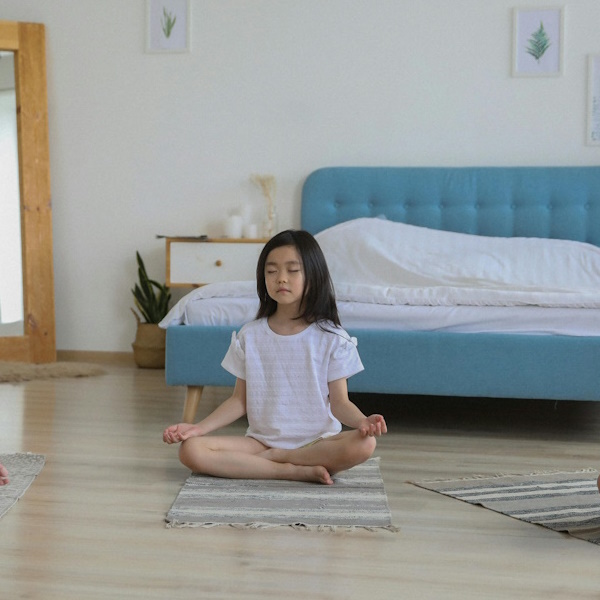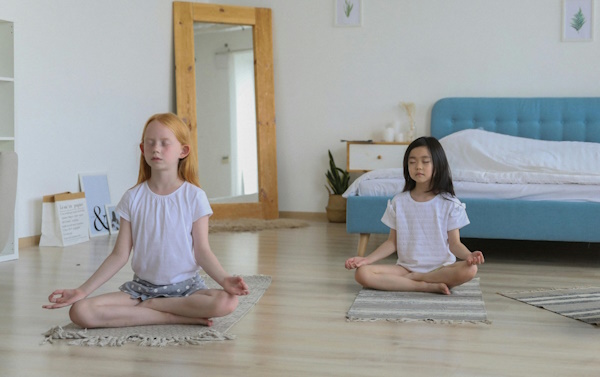Overcoming Barriers to Physical Activity: Time, Motivation & Gym Fears
Embarking on a journey to improve your physical health can sometimes feel like an uphill battle, littered with obstacles that seem to spring up from nowhere. Whether it's a lack of time, energy, or motivation, these barriers to physical activity are more common than you might think. You're not alone in facing them.
Understanding these hurdles is the first step towards overcoming them. From the tight grip of a busy schedule to the daunting feel of gym intimidation, each barrier has its own shape and size. But here's the good news: they're not insurmountable. With the right strategies and mindset, you can leap over these obstacles and pave the way to a more active, healthier lifestyle.
Lack of time
In today's fast-paced world, finding time for physical activity can feel like a daunting task. You're juggling work, family, and social commitments, and at the end of the day, hitting the gym might be the last thing on your mind. However, the notion that you don't have enough time for exercise is a common misconception that needs addressing.
First, re-evaluate your daily schedule. It's not about having time; it's about making time. Sometimes, it means waking up a bit earlier to fit in a morning jog or choosing to walk during your lunch break. Small changes can lead to big results over time.
Next, understand that your workouts don't need to be lengthy to be effective. Research shows that short, high-intensity interval training (HIIT) sessions can be just as, if not more, effective than longer, moderate workouts. Consider the following data:
| Workout Type | Duration | Weekly Frequency | Benefits |
|---|---|---|---|
| High-Intensity (HIIT) | 20-30 min | 3 times | Improves cardiovascular health |
| Moderate Exercise | 45-60 min | 5 times | Improves endurance and stamina |
Incorporating physical activities into your routine tasks is another strategy. Opt for the stairs instead of the elevator, park farther from the store entrance, or engage in active hobbies that you enjoy. These adjustments can seamlessly integrate exercise into your daily life without it feeling like a chore.
Lastly, set realistic goals and celebrate small victories. If you're new to exercising, don't pressure yourself into committing to a rigid schedule immediately. Start with something manageable, and gradually increase your activity level as you become more comfortable and find more opportunities to incorporate exercise into your busy life.
Remember, every bit counts. Whether it's a 10-minute walk or a 30-minute HIIT session, what matters is that you're moving and taking steps towards a healthier lifestyle.
Lack of energy
Feeling too tired or lacking energy is another significant barrier that prevents many from engaging in physical activity. It's a catch-22 situation: you need energy to exercise, but exercise, in turn, boosts your energy levels.
Firstly, it's crucial to examine why you might be feeling low on energy. Are you getting enough sleep? Is your diet providing you with the necessary nutrients? Often, tweaking your sleeping patterns or nutritional intake can be the first step towards overcoming this hurdle.
- Sleep: Adults need 7-9 hours of sleep per night. A lack of quality sleep can severely impact your energy levels and mood, making physical activity seem daunting.
- Diet: Consuming a balanced diet rich in vegetables, fruits, lean proteins, and whole grains can provide you with the energy needed for exercise.
Secondly, start small. You don't have to commit to an hour of exercise right away. Even a 10-minute walk can invigorate your body and gradually increase your energy levels to support more extended periods of physical activity. The key is consistency and gradually building your stamina.
Incorporate Low-Impact Activities: Begin with low-impact exercises like yoga, swimming, or cycling. These activities are less taxing on your body and can be easier to start with if you're feeling low on energy.
Hydration plays a pivotal role in maintaining your energy levels. Even mild dehydration can lead to fatigue and reduced motivation. Ensure you're drinking enough water throughout the day, especially before and after your workouts.
By addressing these aspects, you can slowly but surely break down the barrier of lacking energy and make room for more active and energetic lifestyle choices.
Lack of motivation
Feeling unmotivated is a huge obstacle when it comes to sticking with a physical activity routine. You're not alone if you find it hard to stay excited about exercise. Understanding the root cause of this feeling can help you tackle it head-on.
Firstly, it’s essential to set clear, attainable goals. Without a target, your efforts can seem directionless, making it easy to lose interest. Start by defining what you want to achieve, whether it's losing weight, building muscle, or simply staying active. Remember, specific goals lead to specific results.
Another strategy to boost your motivation is to find an activity you genuinely enjoy. Not everyone loves running or weightlifting, and that’s okay. There are countless ways to get moving—from dancing to hiking to playing a team sport. When exercise doesn't feel like a chore, you're far more likely to stick with it.
Social support can also make a significant difference. Enlisting a friend or joining a group with similar fitness goals provides not just companionship but a sense of accountability. Knowing someone is counting on you can be a powerful motivator. Plus, sharing your progress and celebrating milestones together can make the journey more rewarding.
Variety is the spice of life, and this applies to your workout routine as well. Repeating the same set of exercises can quickly become mundane, zapping your motivation. To keep things interesting, try mixing up your workouts. Incorporating different activities can challenge your body in new ways and reignite your enthusiasm.
Lastly, tracking your progress is crucial. Keeping a workout diary or using a fitness app allows you to see how far you've come, which can be incredibly motivating. Whether it's running a longer distance, lifting heavier weights, or simply feeling more energetic, noticing improvements is a surefire way to boost your motivation.
By addressing these factors, you can overcome the barrier of lack of motivation and find joy and fulfillment in your physical activity journey.
Busy schedule
In today’s fast-paced world, it’s no surprise that a Busy schedule is one of the most common barriers to engaging in regular physical activity. With a day packed from sun-up to sun-down, finding even a small window for a workout can feel like an insurmountable challenge. However, with a bit of creativity and planning, it's possible to weave physical activity into even the busiest of schedules.
First, consider the concept of micro-workouts. These are short, high-intensity sessions that can last anywhere from 5 to 15 minutes. The beauty of micro-workouts is that they can be done almost anywhere without the need for equipment. Squeezing in a quick session of body-weight exercises during a lunch break or doing a few stretches while waiting for the coffee to brew can make a significant difference in reaching your physical activity goals.
Second, it’s essential to prioritize and plan. Just as you would schedule meetings or appointments, pencil in your workouts on your calendar. Treating these time slots as non-negotiable appointments with yourself increases the likelihood of sticking to your physical activity regimen. Early mornings or evenings could offer potential windows for longer sessions, whereas lunchtimes might be perfect for shorter, more intense workouts.
Lastly, consider active commuting. If possible, switch up your commute by walking, biking, or even running to work. Not only does this add physical activity to your day, but it also helps avoid traffic, potentially saving time in the process.
By breaking down the myth that there's no time for exercise, you can find practical solutions to stay active. Remember, every bit of movement counts toward a healthier lifestyle. Incorporating these strategies can help you overcome the challenge of a busy schedule and ensure that physical activity becomes a non-negotiable part of your daily routine.
Gym intimidation
Experiencing gym intimidation is common, and it's one of the significant barriers preventing individuals from engaging in regular physical activity. Whether it's the fear of being judged, not knowing how to use the equipment, or feeling out of place among more experienced gym-goers, these feelings can be overwhelming. It's crucial to acknowledge that you're not alone in feeling this way and that there are effective strategies to overcome gym intimidation.
First, start small. Rather than diving into the busiest gym hours, choose less crowded times to explore and get comfortable with the environment. Early mornings or late evenings tend to be quieter. During these times, you have the luxury of familiarizing yourself with the equipment at your own pace.
Educate yourself about how to use different gym machines or take part in classes. Many gyms offer introductory sessions or tours for new members, which can be an excellent opportunity to learn in a low-pressure setting. Additionally, watching tutorial videos or hiring a personal trainer, even for just a few sessions, can significantly boost your confidence by providing you with a foundational understanding of workout routines and equipment usage.
Building a support system is another effective strategy. Going to the gym with a friend or joining a fitness community can make the experience more enjoyable and less intimidating. Surrounding yourself with supportive individuals who share similar goals can help ease the anxiety associated with gym environments.
Lastly, remember that everyone at the gym started somewhere, and they're all there for their personal growth and health. Wearing comfortable clothing that makes you feel good about yourself can also enhance your confidence, making the gym experience more positive.
By taking these steps, you can gradually overcome gym intimidation, allowing you to focus on your fitness journey without fear or hesitation.
Conclusion
Overcoming barriers to physical activity starts with recognizing what's holding you back. Whether it's finding the time, igniting your motivation, boosting your energy, or facing gym intimidation head-on, there's always a way through. Remember, starting small and building a support system are key. Equip yourself with knowledge about gym machines and prioritize comfort to make your fitness journey less daunting. By tackling these obstacles one by one, you'll soon find yourself embracing physical activity with open arms and a fearless heart. Let's get moving!







